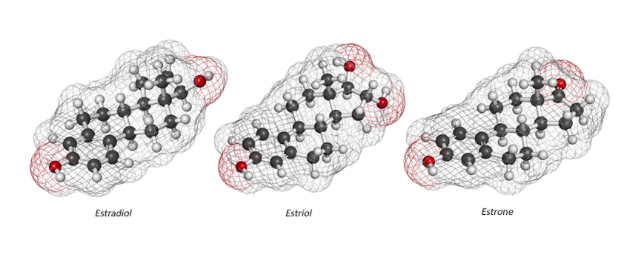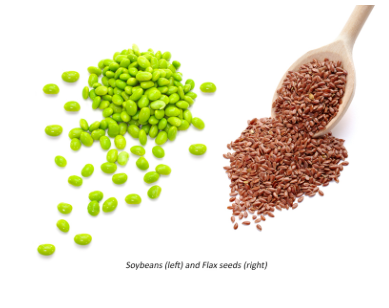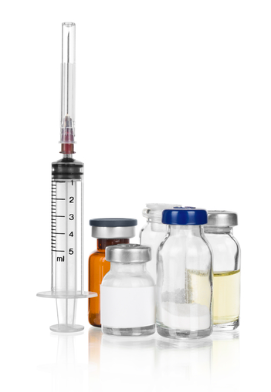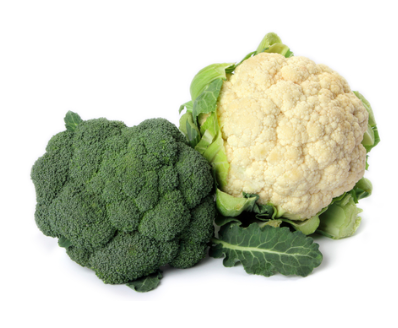Pain Versus Gain: What is Delayed Onset Muscle Soreness, & do we need it to Grow?
Most hard working bodybuilders, from rank beginner to seasoned pro, will experience some degree of training-related muscle soreness. Whether experienced ...

Most hard working bodybuilders, from rank beginner to seasoned pro, will experience some degree of training-related muscle soreness. Whether experienced ...
Question: “Will taking simple carbs after a workout negate the effect of growth hormone production from your workout and kill ...
If you eat a well balanced "healthy" diet, are supplements REALLY necessary to optimize progress? Learn some surprising reasons why ...
There is no need to go into detail about how important shoulder development (specifically deltoids) is to a complete physique. ...
Minerals like zinc and magnesium are necessary for us to properly use energy, detoxify our bodies, and hundreds of other ...
Despite our muscle gains and the conditioning we are able to achieve, many of us remain unhappy with our physical ...
It is important to keep in mind that these 10 key suggestions for Quad training will fly in the face ...
With an overwhelming amount of research demonstrating its benefits, ‘resistant starch’ blows away many of the sexier sounding supplements that ...
Grocery shopping can be a daunting task. Organic, cage-free, grass-fed, non-GMO, certified, fortified, petrified…there are so many choices and so ...
Did you know that your body is approximately 90% bacteria and only 10% human? From birth to death, our gut ...
It’s been said that women are from Venus & men are from Mars, but when it comes to potential in ...
An ability to build thick layers of lean muscle indefinitely is one trait no bodybuilder will ever possess, despite any ...
 Mention the term ‘steroid hormone’ to most beginner bodybuilders and they may assume you are talking about the most coveted of this category of compounds, testosterone. While testosterone takes its rightful place at the top of the steroid hormone list for many high performance trainees, it is but one compound in one of four categories of human steroid compounds: glucocorticoids, progestogens, androgens, and, the subject of this article, estrogens. Indeed, besides testosterone, estrogen is the most commonly referenced steroidal compound, and it may come as a surprise to learn that estrogen heavily influences the health, wellbeing, and fitness of both sexes, though it is predominantly produced in females.
Mention the term ‘steroid hormone’ to most beginner bodybuilders and they may assume you are talking about the most coveted of this category of compounds, testosterone. While testosterone takes its rightful place at the top of the steroid hormone list for many high performance trainees, it is but one compound in one of four categories of human steroid compounds: glucocorticoids, progestogens, androgens, and, the subject of this article, estrogens. Indeed, besides testosterone, estrogen is the most commonly referenced steroidal compound, and it may come as a surprise to learn that estrogen heavily influences the health, wellbeing, and fitness of both sexes, though it is predominantly produced in females.
The Science
For females, estrogen production primarily begins in the ovaries via the synthesis of dehydroepiandrosterone (DHEA) – a 19-carbon steroid hormone which is itself produced from cholesterol, the precursor to all steroid hormones. After secretion, the estrogens circulate in the blood and readily diffuse across cell membranes where, once inside, they bind to their corresponding receptor forming a hormone receptor complex. Once the complex is formed, it enters the cell’s nucleus and attaches directly to DNA where it modulates gene expression. Additionally, some estrogens bind to and activate G protein-coupled receptor, GPR 30 (one of a large family of receptors which induce cellular responses and, in turn, govern many physiological processes, including immune system regulation and autonomic nervous system transmission, in addition to estrogen-controlled growth and development) [1].
Just as females produce a fraction of the testosterone that men do (approximately .5 mg per day compared to 7-8 mg for males), men produce vastly smaller amounts of estrogen by comparison to women. That being said, it is very important for the body to maintain a proper balance of both hormones, although the ratios are different in each sex. Negative consequences may also arise should this balance be disrupted [8]. The Natural Estrogens
The Natural Estrogens
The natural estrogens comprise the primary female sex hormones. The most abundant estrogen circulating during a woman’s reproductive years is estradiol (E2), with estrone (E1) and estriol (E3) further comprising the three major naturally-occurring estrogens (80-times stronger than estriol, estradiol is also the most potent of the estrogens, possessing the highest estrogenic activity). A woman’s estrogen ratio will vary at various life stages. Typically, estrogenic activity will surge during adolescence, fluctuate on a monthly basis during the reproductive years, and taper off during menopause. Estrone, a known carcinogen, is usually produced in small amounts but becomes the predominant estrogen in postmenopausal women (while the other estrogens are reduced). Estriol, produced by the placenta, is significantly increased during pregnancy.[16] A further estrogen, estetrol (E4), is produced in the fetal liver during pregnancy. [1]
Xenoestrogens
The xenoestrogens, which include synthetic or natural compounds found in certain chemicals and foods, are not, to defy conventional wisdom, estrogens, but rather they are substances known to have estrogenic effects. These include the phytoestrogens, or plant estrogens, which are consumed through the intake of phytoestrogenic plants, most notably oilseeds (including flax, which packs an astonishing 379 milligrams of estrogen per 100 gram serving), and soy (over 100 milligrams of estrogen per 100 gram serving). Because they alter hormone production and function, the xenoestrogens are considered to be estrogen disruptors.
 The most harmful of all estrogen disruptors are certain types of synthetic compounds used for industrial purposes such as BPA (bisphenol A), PCBs (polychlorinated biphenyls), phthalates (plasticizers), pesticides (DDT), and certain drugs (DES).[11]
The most harmful of all estrogen disruptors are certain types of synthetic compounds used for industrial purposes such as BPA (bisphenol A), PCBs (polychlorinated biphenyls), phthalates (plasticizers), pesticides (DDT), and certain drugs (DES).[11]
Pharmacological compounds and synthetic estrogens, which include the contraceptive drug ethinyl estradiol and other hormone replacement therapy drugs, possess obvious benefits but may also promote cancers, heart disease, blood clotting issues, and other serious health threats.[2] [11]
Most scientists consider many xenoestrogens to be hormonally disruptive and regard them as harmful environmental toxins. On the other hand, the phytoestrogens, which also include rice, certain vegetables, coffee, and beer, are thought to provide a protective effect against certain cancers, in particular breast cancer.
Not considered nutrients, as a dietary lack will not produce any nutritional deficiencies, phytoestrogens, are currently being investigated for their potential cancer, osteoporosis, and cardiovascular disease prevention benefits. However, certain phytoestrogens, such as genistein and coumestrol (found in soy and legumes) bind to estrogen receptors where they may either protect against, or encourage the formation of breast and prostate cancers.
Mycoestrogens
Then there are the mycoestrogens. Produced by a fungus which grows on post-harvest grain, mycoestrogens (also referred to as estrogenic mycotoxins, or fungal estrogens) are occasionally consumed indirectly through beef or grains such as corn. One mycoestrogen, fusarin C, a contaminant of cereal grains, has been linked to esophageal cancer and the growth of breast cancer cells.
General Function
Largely responsible for the development and maintenance of the female reproductive system, and present in significantly higher levels in women of reproductive age, the major role of estrogen in females is to promote the development of secondary sex characteristics, which appear during puberty. These include the enlargement of breasts, widening of the hips, female body fat distribution, and the growth of pubic hair.[1, 10] The estrogens enter all cells, but are only active in those which contain estrogen receptors: correspondingly, estrogen receptors are highly expressed in tissues such as the ovaries, uterus, and breasts.
Most animals, both male and female, depend on the estrogens to spur growth, development, and shape behavior.[10, 15] Estrogen’s additional effects include: metabolic rate acceleration, fat store proliferation, synthesis of binding-proteins, blood coagulation, and the mediation of fluid balance and lung function. Reduced estrogen levels can play a role in the onset of depression and binge eating behavior in females. Sustained low levels or the sudden withdrawal of estrogen has been found to be correlated with mood disturbances in females (interestingly, abnormally low testosterone levels in men have the same effect). [7, 13] Once estrogen levels are stabilized or restored, mood is significantly improved. Somewhat surprisingly, research also suggests estrogen replacement to be a suitable solution to binge-eating behaviors, given the complex relation between estrogen, serotonin, and binge eating behavior. [13]
Estrogen In Men
In men, the estrogens begin their life as androgens. Like their cholesterol predecessor, steroids are a type of fat molecule with a four-ringed carbon backbone. To transform cholesterol into estrogen, a series of enzymatically governed chemical reactions must occur: first the steroid pregnenolone is produced from cholesterol, which goes on to form DHEA and androstenediol, which is then converted to the androgens. Finally, specific enzymes called aromatases are called upon to convert the androgens into estrogen [15]. Gene expression largely dictates this process.
For males, the estrogens influence fertility through the effects they have on the testis, prostate, and other sex tissues, and their role in balancing fluid absorption within sperm (excessive fluid minimizes sperm potency and efficacy). [12, 14, 15] During puberty, estradiol determines final height via the regulation of growth hormone in a process that results in epiphyseal fusion (or the fusing of growth plates). [1] Although important for the regulation of male reproductive and pubertal growth, excessive estrogen production in males can be harmful.
Normally, just enough is produced at just the right time, however, for a variety of reasons – including health, aging, and the use of certain pharmaceuticals – some men will suffer the effects of excessive estrogen production.[1] Elevated estrogen levels most commonly affect the aging male. One of the biggest hidden health problems facing men today is caused by a lack of understanding as to what estrogen is and how their estrogen balance may affect health and wellbeing.
Men require a certain amount of estrogen. However, as men age their estrogen balance can for a variety of reasons, be disrupted.[8, 9] As men age, the formation of androgens in the adrenal glands and testes is decreased (typically by 1-2 percent each year after the age of 30, though some men experience similar depletion rates much earlier). What often does not change, however, is the aromatization of testosterone to estradiol, and in fact, aromatization may increase despite the dwindling T levels of aging men.[9] This creates an androgen/estrogen ratio imbalance: the beneficial testosterone plummets while the problematic estrogen increases.[8, 14] What little testosterone the aging male does produce is converted into the increasingly feminizing estrogens.
Age-associated fat accumulation and increased aromatase activity are largely to blame for this predicament. Compounding matters are the increasingly relaxed lifestyle habits which typically accompany and accelerate the aging process: less attention paid to correct nutrition, less sex, fewer, if any, intensive training sessions (all of which boost testosterone production), are to blame for the decline.[9]
Do You Have High Estrogen?
Key indicators that estrogen levels may be excessive include expanding abdominal girth, muscle loss, tiredness, emotional instability, and the development of breast tissue (gynecomastia). Excess estrogen in males may also contribute to the development of atherosclerosis, stroke, coronary artery disease, infertility, prostate enlargement, and cancer.[2][3][6][18]
“Chemical Assistance”
For the average male, excessive estrogen levels can create havoc on the body. However, for bodybuilders the situation is even more dire. It must be said that regular training, a healthy diet, and good lifestyle habits will help keep testosterone levels high while negating excessive conversion to estrogen, but for some, even that is not enough. [14]
In hopes of tipping the androgen/estrogen balance in favor of the more muscle building androgens, more and more bodybuilders are turning to synthetically derived anabolic/androgenic steroids. The thing most fail to realize is that the body loves balance, and will do all it can to maintain a state of homeostasis.
Fat deposition, muscle mass, hormone levels, and estrogen/testosterone balance are all governed by finely-tuned biological processes specifically designed to maintain a physiological equilibrium. Our hormones are all kept within a narrow range and there are many checks and balances in place to counter any deviation. [12] For males this means more testosterone and less estrogen (for females, the opposite). However, when steroids are introduced exogenously, homeostasis is thrown out of whack.
For a system used to handling, at most, 8 mgs of testosterone per day (or 56 mgs per week) the sudden introduction of, say, 500mgs will produce a host of unwanted side effects, one of which is the excessive production of estrogen.
Indeed, all athletes who use certain androgenic/anabolic steroids may experience one or several of estrogen’s feminizing effects; these include high voice, gynecomastia, female fat patterning, and water retention. Soreness in the nipples is usually the first sign of excessive estrogenic activity. To make matters worse, estradiol shuts down the endogenous production of testosterone, which in many cases, results in a significantly reduced sperm count and sets the stage for a tough battle with low T.
These effects may occur directly after a steroid cycle, when androgen levels are rapidly reduced following the cessation of drug use but estrogen production remains high. Ironically, the very substance that promises fast and impressive muscle gains may also lead to the development of characteristics which undermine the muscle building progress. A soft, bloated physique with noticeable gynecomastia (enlargement of male breasts), a high-pitched voice, and excessive fat deposits on the hips and rump, do not make for a very impressive bodybuilder. Admittedly this is an extreme manifestation of high estrogen levels, but such cases have been reported. However, there is hope, and steps can be taken to remedy this problem.
Natural Causes For High Estrogen
One of the biggest factors responsible for increased estradiol production is an excessive accumulation of fat. Functioning as a secretory gland, subcutaneous fat produces large amounts of aromatase, the compound that converts testosterone into estrogen.[10] To decrease susceptibility to excess estrogen production, it is therefore critical to ensure that body fat levels are maintained within an acceptable range (no more than 15 percent for males).
Another factor heavily related to fat increases, and in and of itself a producer of estrogen, is alcohol consumption. The kidneys are an undervalued bodily system responsible for waste removal and detoxification. The kidneys also remove excessive estrogen from the body. Drinking alcohol interferes with this process.
How To Reduce Estrogen
Whether it is produced in response to the aging process, poor health, or the administration of synthetic androgens, there are many ways to counter estrogenic activity in males. Avoid, whenever possible, the consumption of hormone-fed livestock and related dairy products as these can contain harmful levels of xenoestrogens, as do many health and beauty products as well as pesticides and other household chemicals.[11] While controversial, it is thought that certain phytoestrogens can be used to raise estrogen levels in females. Males, however, are urged to avoid these products, which include soy and its estrogen raising  isoflavones. Though no harm may result from the consumption of soy in small amounts, it is best to err on the side of caution and avoid it as much as possible.
isoflavones. Though no harm may result from the consumption of soy in small amounts, it is best to err on the side of caution and avoid it as much as possible.
Be sure to consume enough vitamins, minerals, and antioxidants, in particular zinc, which has been shown to slow the conversion rate of testosterone to estrogen.
Finally, one of the most potent natural anti-estrogenic substances, diindolylmethane (DIM), itself a phytoestrogen found in cruciferous vegetables such as broccoli and cauliflower, can be used to reduce estrogen. (A case where the bodybuilding dogma reigns true. Eat your broccoli!)
As for countering steroid-related estrogen production, certain anti-estrogen and anti-aromatase drugs – for example Tamoxifen, Clomiphene, Letrozole, and Arimidex can significantly reduce the effects of estrogen in various ways. It is beyond the scope of this article to discuss these drugs further but they are well worth exploring if you are suffering from any of the above-listed side effects resulting from steroid use.
**Consult a medical health professional if you are thinking about using any kind of pharmaceutical or if you are experiencing the effects of excessive estrogen production.
Low E?!
While driving down estrogenic activity can be a good thing, rock bottom levels pose dangers as well. By maintaining an ideal range of estradiol, males can better maintain bone density, cognitive function, and the lining of arterial walls, as well as a host of other functions. Ask your physician to administer regular blood tests to check that your estradiol levels are within the normal range.
While males are mostly encouraged to lower estrogen levels, women must ensure estrogen is kept within a sufficiently high range. Although it is quite common for estrogen levels to fluctuate wildly through the different cycles of life (including during menstruation), it is important for females to keep estrogen fairly high at all times. [5]
In Conclusion
Considered by many to be a nemesis to bodybuilding progress, estrogen is nevertheless an important sex hormone for both sexes, provided it is balanced correctly with testosterone. For women, estrogen must be kept at sufficiently high levels to ensure sound reproductive health and the full manifestation of its feminizing effects. Likewise, for men, estrogen is important for general health, wellbeing, and reproductive health, but levels are to be kept low at all times. Should males reading this article experience an unexplained loss of muscle mass, more accumulated fat than usual, or the development of breast tissue, perhaps high estrogen may be to blame. The many wide-ranging functions of estrogen are too numerous to fully elaborate upon here but suffice it to say estrogen is, for both sexes, critical to health and wellbeing.
References